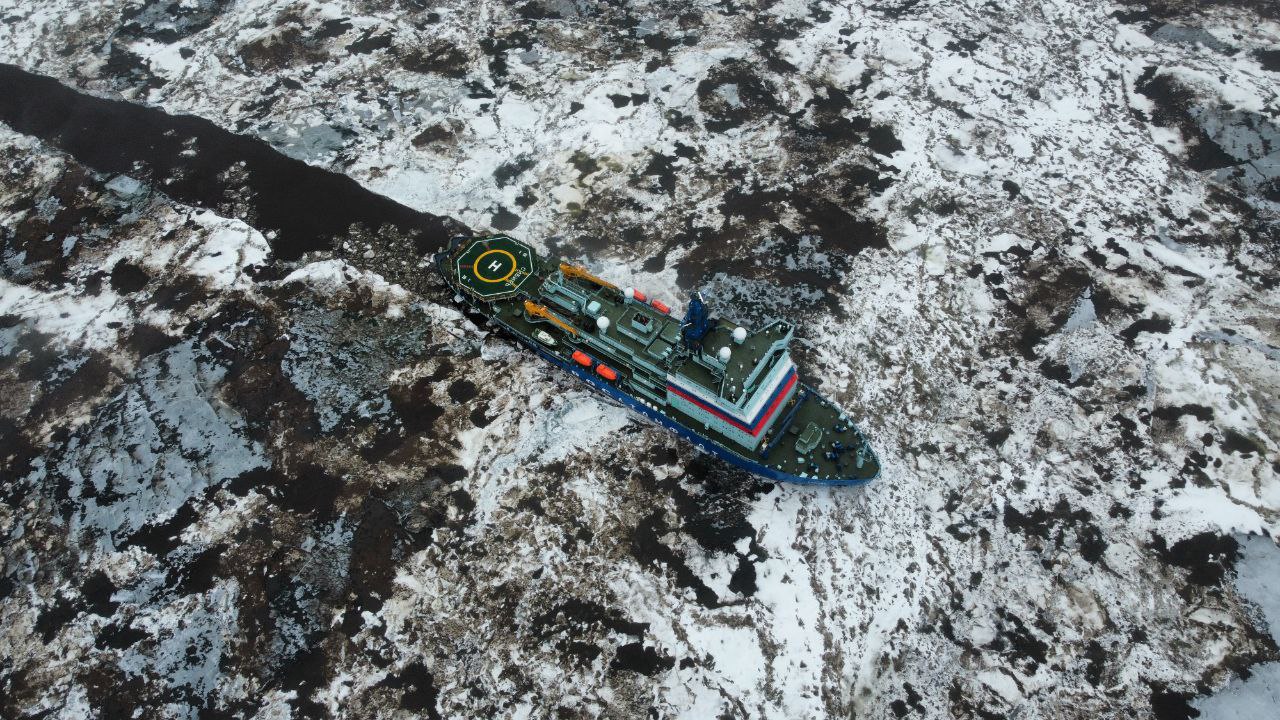
Nuclear-powered icebreaker Sibir, serial ship of Project 22220, operated by Rosatom’s FSUE Atomflot has returned to its homeport Murmansk upon completion of yet another navigation season on the Northern Sea Route (NSR). Between November 2022 and September 2023, the icebreaker provided assistance to 128 vessels and covered 62,155.6 nautical miles, according to the company’s Telegram.
“This September, nuclear-powered icebreaker Sibir has taken part in a unique operation on escorting the largest Capesize bulker carrying 164.5 thousand tonnes of iron-ore concentrate. The crew provided assistance to the ship to ensure its safe passage across the East Siberian Sea,” said Oleg Darbinyan, Acting General Director of FSUE Atomflot.
After a long voyage, the Sibir will undergo scheduled maintenance in Murmansk with the crew to be changed on September 22.
IB Sibir is the first serial icebreaker of Project 22220. It was laid down in May 2015 and launched in September 2017. The state-hoisting ceremony was held on the ship on 25 January 2022 in Murmansk. The same day, the ship left for its first voyage on the Northern Sea Route (NSR).
Three nuclear-powered icebreakers of Project 22220, Arktika Sibir and Ural, are already in operation in the Northern Sea Route waters. Baltiysky Zavod shipyard continues the construction of the third and the fourth nuclear-powered icebreakers of Project 22220, IB Yakutia (delivery scheduled for December 2024) and IB Chukotka (delivery scheduled for December 2026). In February 2023, FSUE Atomflot and Baltiysky Zavod JSC signed a contract for construction of the fifth and sixth nuclear-powered icebreakers of Project 22220 – Kamchatka and Sakhalin – with the delivery scheduled for December 2028 and December 2030, respectively.
Multipurpose nuclear-powered icebreakers of Project 22220 ships are the world’s largest and most powerful icebreaking ships. Their key task is to ensure year-round navigation in the Arctic. Icebreakers of 22220 design will form the basis of Russia’s civil icebreaking fleet in the near time.
Key particulars of Project 22220: power — 60 MW; speed — 22 knots (in clear water); LOA - 174 m; beam - 34 m (33 m, DWL); height – 52 m; draft (DWL) - 10.5 m/8.65 m; minimum draft – 9.3 m, full displacement – 33,540 tonnes; maximum icebreaking capability - 2.8-meter-thick ice (at full capacity and speed of 1.5-2 knots); designated service life - 40 years, crew - 53.



